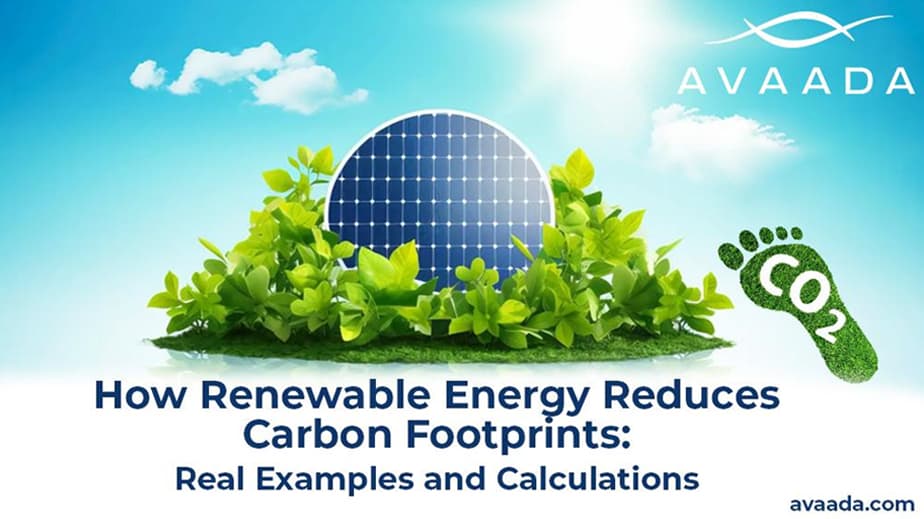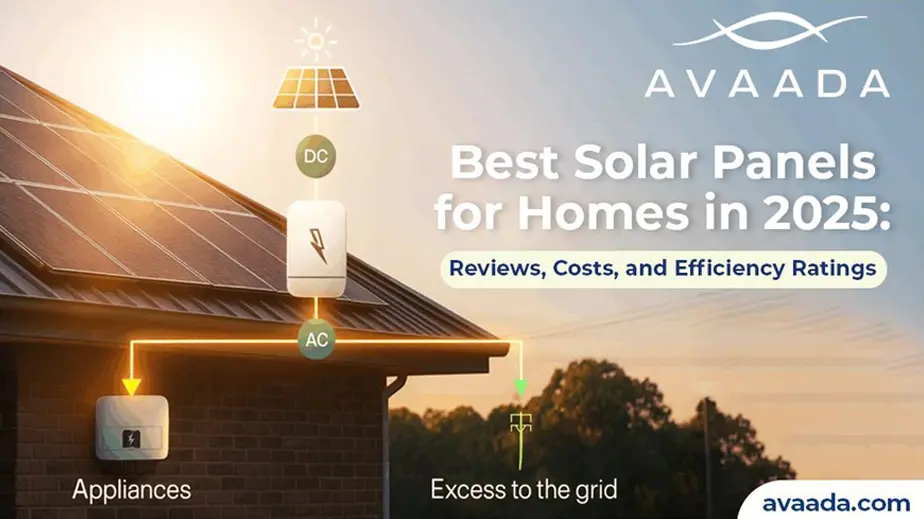Every ton of greenhouse gas added to the atmosphere increases the risk of climate-related impacts, including extreme weather, sea-level rise, health impacts, and biodiversity loss. One of the strongest levers to mitigate this is reducing the carbon footprint of energy systems. Renewable energy, especially solar and wind, plays a central role in this shift. Deployment of renewables, when paired with storage and firming, can contribute toward decreasing the use of fossil fuels as per available public data and technical studies.
Renewable energy plays a crucial role in reducing carbon footprints by replacing fossil fuel-based power with cleaner, more sustainable alternatives. Advanced solutions, such as pumped storage projects, ensure that renewable sources remain reliable while supporting long-term sustainability.
What Is Carbon Footprint and Why Does It Matter?
A carbon footprint is the total greenhouse gas (GHG) emissions (measured in CO₂ equivalent) produced directly or indirectly by an entity like a company, project, or individual. This includes:
- Direct emissions (Scope 1): For example, fossil fuel burning on-site.
- Indirect emissions (Scope 2): For example, electricity purchased from the grid.
- Lifecycle emissions (Scope 3): from manufacturing, supply chains, and disposal.
Reducing carbon footprints is vital because it:
- Combats global warming by cutting GHG accumulation in the atmosphere.
- Improves air quality and public health.
- Mitigates regulatory, reputational, and financial risks for businesses.
- Supports compliance with global climate commitments (Paris Agreement, net-zero goals).
The Role of Renewable Energy in Carbon Emission Reduction
Renewable energy technologies are utilised to replace fossil-based power generation, based on operational results and current installations, as observed in industry practice.
Displacement of Fossil-Based Power
Each kilowatt-hour (kWh) of electricity produced by solar or wind displaces a kWh that would otherwise come from coal, gas, or diesel. Suppose a coal plant emits 0.9 kg CO₂ per kWh. If a solar farm generates 10 million kWh annually, it avoids 9 million kg (9,000 tons) of CO₂.
Lifecycle Emissions and Embedded Carbon
Renewable energy systems also reduce lifecycle emissions in the long run. Although manufacturing solar panels or wind turbines emits carbon, this “embedded carbon” is recovered (“paid back”) after a few years of generation. After that, the energy is nearly carbon-free (ignoring maintenance).
Must Read:- Green Hydrogen VS Blue Hydrogen
Reduction in Scope-2 Emissions
For companies that purchase grid electricity, switching to renewable sources reduces their scope 2 emissions. A factory that draws 1 million kWh from the grid can reduce its annual CO₂ emissions by several thousand tons by sourcing that energy from a solar installation with storage.
Examples & Calculations
Let us consider two examples with calculations to provide a better understanding of the amount of carbon emissions reduced through the use of renewable energy.
Example 1: Rooftop Solar + Storage for an Industrial Site
- Rooftop solar capacity: 1 MW
- Annual generation: 1.5 million kWh
- Displacement factor (coal grid): 0.8 kg CO₂/kWh
- CO₂ saved = 1.5 million × 0.8 = 1.2 million kg = 1,200 tons CO₂ annually
Adding storage to shift production to peak hours and avoid grid imports can increase actual CO₂ reduction by 10–20%.
Example 2: Renewable + Pumped Storage Projects (PSP) Firming
Consider a solar project paired with a pumped storage system:
- Solar output (day) = 100 MW for 5 hours = 500 MWh
- Stored in PSP; released over the next 5 hours at 80% efficiency → 400 MWh usable
- If grid emission factor is 0.7 kg CO₂/kWh, CO₂ avoided = 400,000 × 0.7 = 280,000 kg = 280 tons CO₂
Because this scheme provides dispatchable power, fossil peaker plants are displaced during critical demand hours.
The Role of Storage & Avaada’s PSPs
Renewables alone cannot run 24/7. That’s where storage comes in, especially Pumped Storage Projects (PSPs). PSPs store surplus power by pumping water uphill to reservoirs, then release water to generate electricity as needed, in accordance with industry-accepted operational mechanisms.
Key Advantages of PSPs:
- Decades-long lifespan (> 70 years)
- Low degradation compared to batteries
- Fast ramp-up and ancillary services
- High capacity for firm, round-the-clock green power
By integrating PSPs with wind and solar plants, it is possible to improve the reliability of renewable energy. This approach is reflected in industry practice and published technical data.
Ways to Reduce Carbon Footprint: Beyond Renewable Adoption
- Energy Efficiency: Improve insulation, lighting, and HVAC systems.
- Demand Management: Shift heavy loads to renewable-rich hours.
- Grid Modernization: Smart grids reduce losses and optimize resource use.
- Green Fuels: Use green fuels (like synthetic hydrogen or green methanol) for transport and industrial sectors to replace fossil fuels.
- Circular & Low-Carbon Manufacturing: Use low-carbon materials, recycling, and supply-chain optimization.
Global Trends Driving Adoption
New and recent trends in renewable energy include:
- Rapid drop in LCOE (levelized cost of electricity) for solar and wind
- Hybrid renewable + storage projects
- Digitalization and AI for predictive operations
- Green fuels (e.g., green methanol) enable clean energy in transport and industry.
Projects receiving support from policy initiatives and public programs are increasingly focused on measurable reductions in carbon emissions.
The combination of solar, wind, and PSPs reflects evolving renewable energy technologies meeting market requirements for operational reliability and emissions reduction.
Challenges & Mitigation
Challenges exist, including high initial investment, regulatory uncertainty, land acquisition, and integration complexity. Status updates across the renewable sector indicate that these can be addressed through:
- Government incentives and policy certainty
- Public-private partnerships
- Technological innovation and scalability
- Strategic siting to minimize environmental disruption
Such progress is demonstrated by case studies involving engineering solutions, stakeholder engagement, and ESG-compliant design approaches disclosed in the public domain.
Conclusion
Reducing carbon footprints is important in the context of climate considerations. Renewable energy deployment, notably solar and wind, as documented in technical reports and regulatory references, is a key element of current carbon reduction efforts.
Calculations show that even a modest-sized system can avoid hundreds of tons of CO₂ each year. When such systems are deployed on a larger scale, based on existing operational data, substantial carbon reductions have been realized.
Adoption of green fuels and efficiency measures further supports a lower carbon footprint.
Implementing renewable energy and storage technologies supports current efforts to achieve a cleaner environment and a more resilient energy infrastructure.








